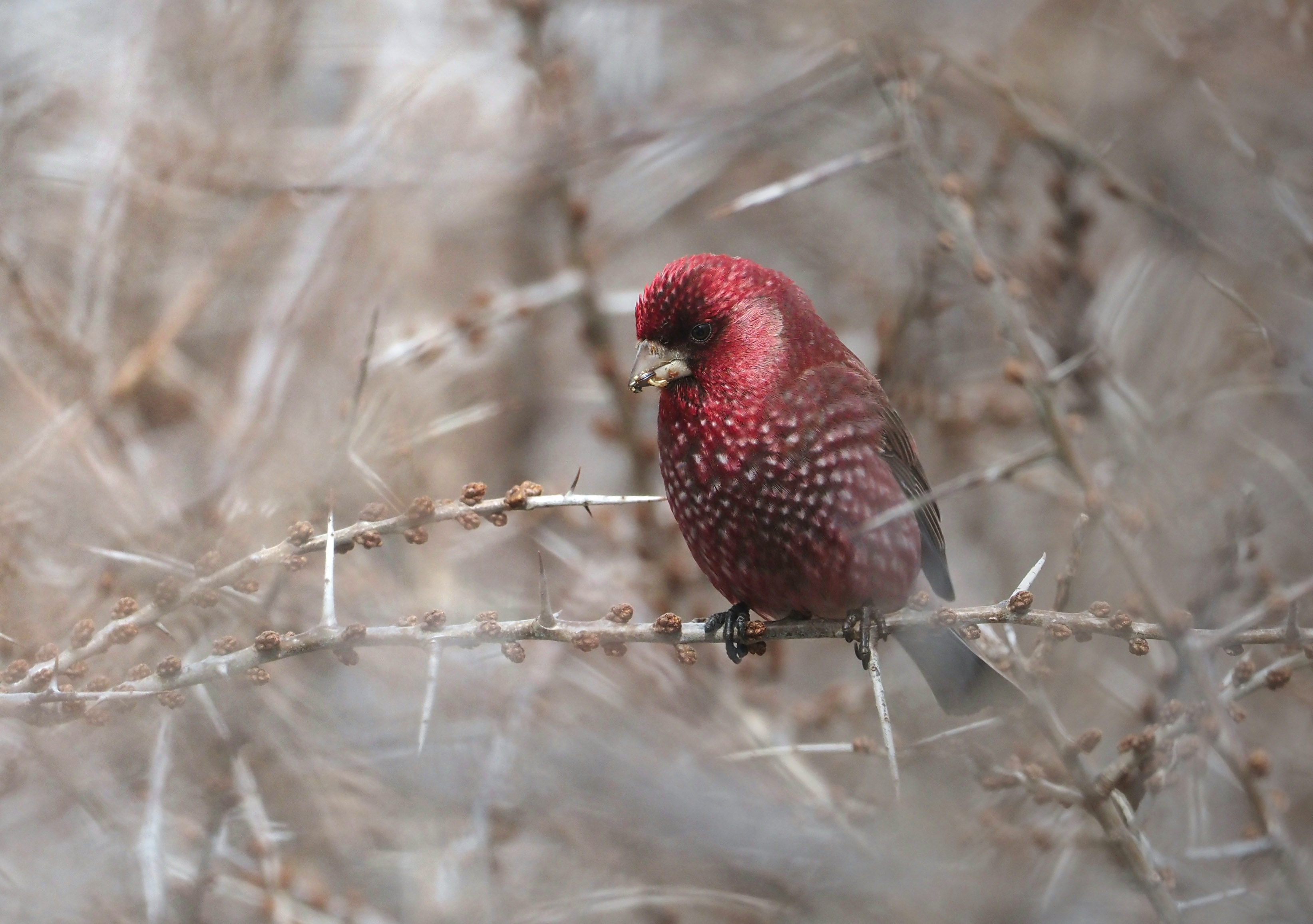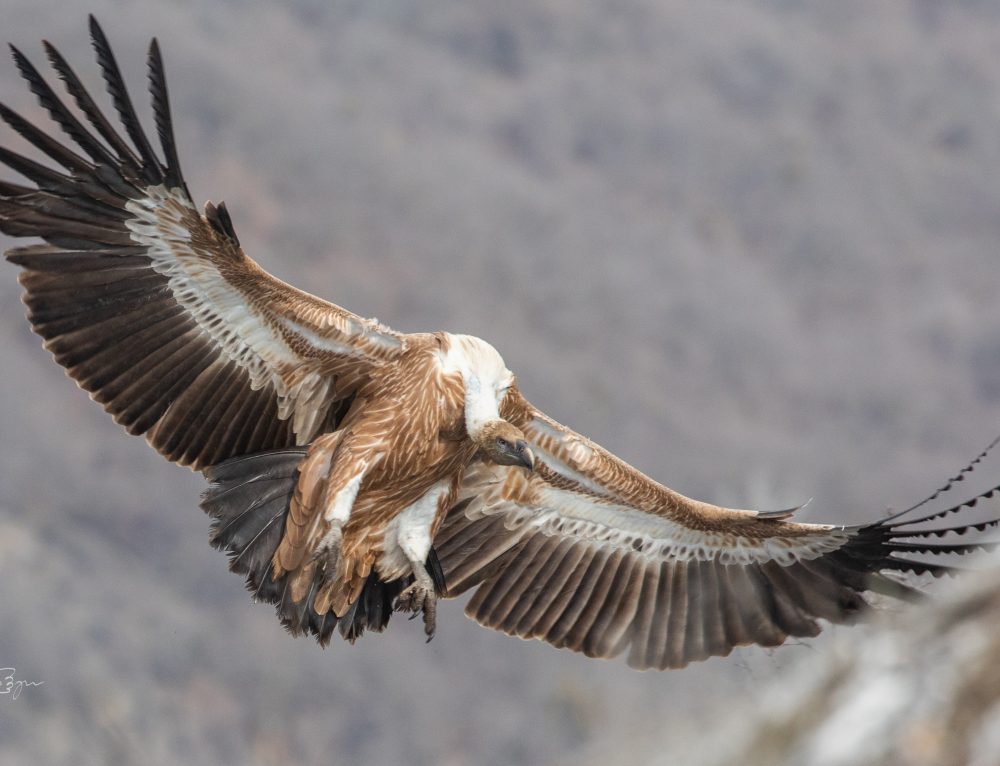The Frosty Caucasus
A winter photo session with Güldenstädt’s Redstart (White-winged Redstart) and Great Rosefinch
More than 150 years ago, Gustav Radde, the doyen of ornithology in the Caucasus, faced a mystery. He had just returned from an expedition into the winterly central Caucasus where he succeeded to collect a few specimens of Güldenstädt’s Redstarts and Great Rosefinches in the floodplains of Terek river in the outskirts of Stepanzminda. Today a lively mountain village, Stepanzminda was just a simple army post and horse station in Radde’s time, and a winter expedition into the high Caucasus a dangerous challange. Against this background, we can all the more understand the ornithologist’s deep satisfaction with the bagged specimens, all the more as almost nothing was known to science about these two himalayan elements which just marginally penetrate into Europe in the Caucasus mountains. And so, every line of the species accounts about Güldenstädt’s Redstart and Great Rosefinch as we can read in Radde‘s pioneering book on the birds of the Cauacasus, ‘Ornis Caucasica’, tells us about his enthousiasm and excitement over his encounter with these flying gems in the deep snow of the riparian buckthorn scrub at the foot of the magnificent Kasbek massive.
However, what Radde puzzled was the question about the breeding grounds of these two most colourful of the Caucasian ‘Big Five’ – where do Güldenstädt’s Redstart and Great Rosefinch actually reproduce and spend their summers? A reading of ‘Ornis Caucasica’ indicates that Radde throughout his life never really got an answer to this question. He even speculated, that Great Rosefinches might breed in the dense fir forests of Svaneti region of the Western Caucasus – nothing could be further from the truth, as both species, Great Rosefinch and Güldenstädt’s Redstart, shun any larger tree, let alone forests. Nowadays, Radde’s conudrum has been solved a long time ago, and we know of course that both species breed in open alpine tundra throughout the Caucasus range above 3000 meter above sea level. Although he was a brave explorer and carried out many surveys at high alpine areas, he obviously was never lucky to meet this two species during summer season. With today’s knowledge we could hardly hide an easy smile when we realise how barely poor Radde missed his target: a thousand meters above the buckthorn scrub of the river valley, near the tongues of the large glaciers at the slopes of the Kasbek massive, Güldenstädt’s Redstarts and Great Rosefinches are abundant character species of the barren rocky landscape.
Much has changed since Radde’s winter expedition one and a half century ago. Our knowledge on the avifauna of the Caucasus has increased significantly, notch and bead sights were replaced by binoculars, telephoto lenses, and memory cards, and the former Kazbegi horse station has grown to a mountain village with touristic facilities. What remained the same however, is the fascination of encounters with Great Rosefinches and Güldenstädt’s Redstarts in the ‘The Frosty Caucasus’. This expression – well-known amongst alpinists and writers – was derived from a book with the same title published by Florence Crauford Grove, a contemporary of Gustav Radde, and one of the pioneers of international alpinism. This poetic expression, coined by a hardy mountaineer, aptly describes the winter wonderland around Stepanzminda. And large numbers of both Great Rosefinch and Güldenstädt’s Redstart still spend wintertime in the riparian scrub dominated by buckthorn on whose berries the birds feed. And like in the old times, Bearded and Griffon Vultures, as well as Golden Eagles can be expected to glide over anytime, casting large shadows on the bushland glittering in the winter sun. Caucasian Twites, Caucasian Horned Larks and Red-fronted (Fire-fronted) Serins frequent the nearby slopes at the bushland edges, constantly challenging us to keep our focus on the two main protagonists.
In this respect, within the scope of our winter photo session, we will wander in the footsteps of Gustav Radde, saving us bother and effort of a long hike up to the high alpine breeding grounds (which, of course, has its own charm and appeal…). Unlike good old Radde, however, who saw just a handful of individuals, we will see Great Rosefinches and Güldenstädt’s Redstarts in the dozens – the latter species, with some luck, even in the hundreds! Moreover, camouflaged tents, placed and adjusted at proven corners within the buckthorn thickets, will significantly support our photographic success. And the closer to the evening, the differences to the old times are growing exponentially: after a successful day of photo hunting we will enjoy a sumptuous dinner and the rich Georgian cuisine of our hospitable family run hotel. And while leaning back in the warm and cosy atmosphere of the guesthouse, contemplating the past day and appreciating our photo treasures, we might even spend a few thoughts on our brave predecessor some 150 years ago, living a rugged and hard expedition life under elemantary conditions in search of Great Rosefinches and Güldenstädt’s Redstarts in the ‘The frosty Caucasus’…
For more information, please send us an email at info@birdingcaucasus.com
If necessary, we can arrange a telephone meeting via Whatsapp to discuss the details of your future tour, and if it would be more convenient for you, we can also communicate in German language.

Authors of article: Asmus Schröter and Alexander Rukhaia
Photographers
- Great Rosefinch (home page) by Otto Samwald
- Güldenstädt’s Redstart (tour header) by Max Nienhaus
- Great Rosefinch (tour overview) by Asmus Schröter


